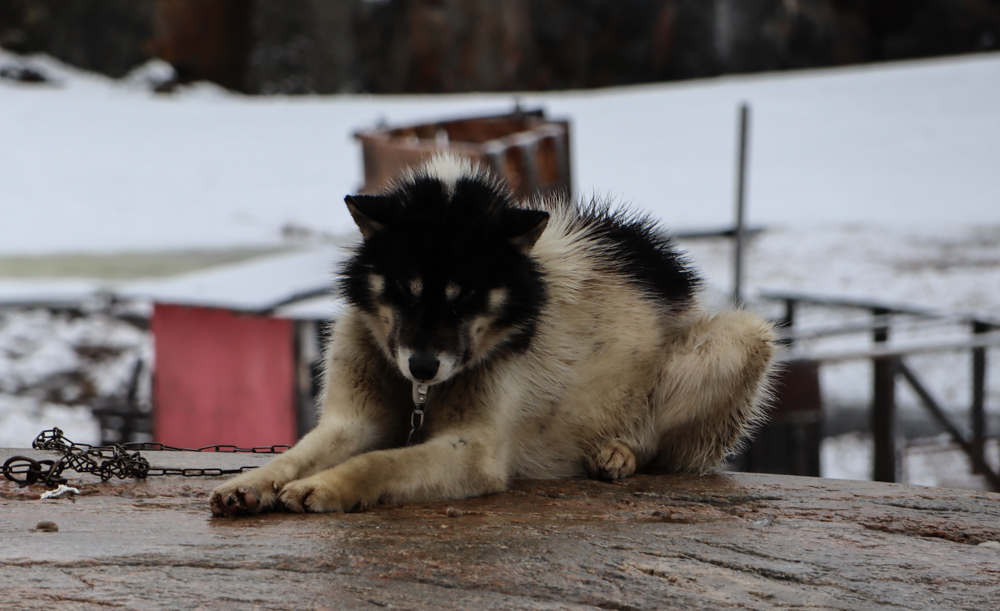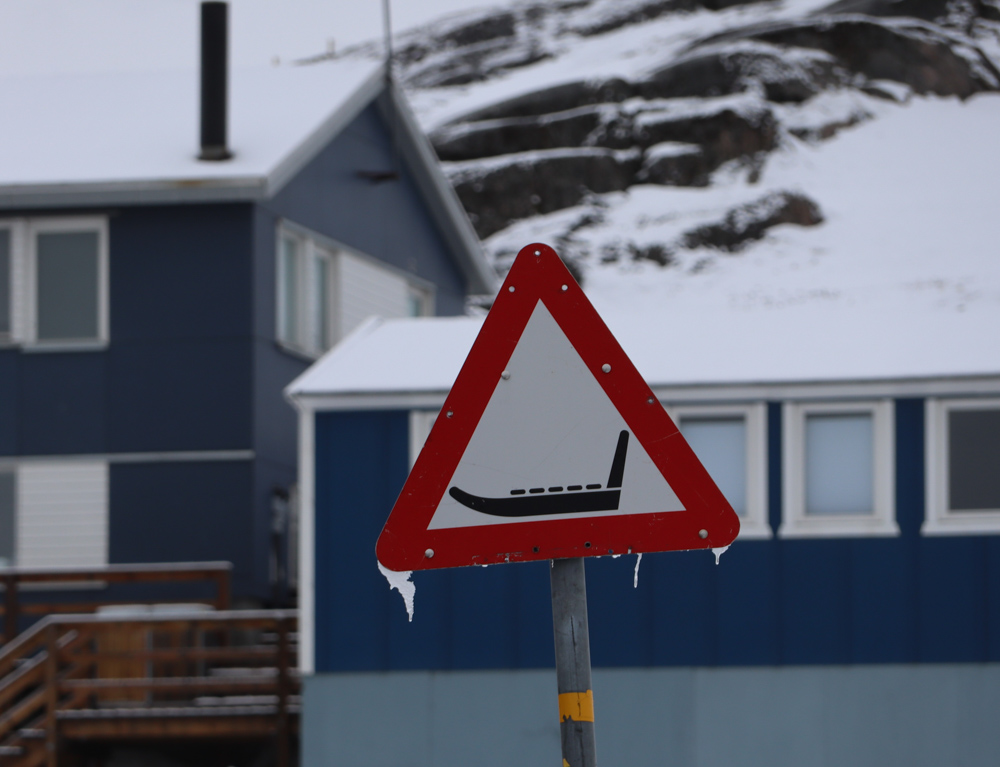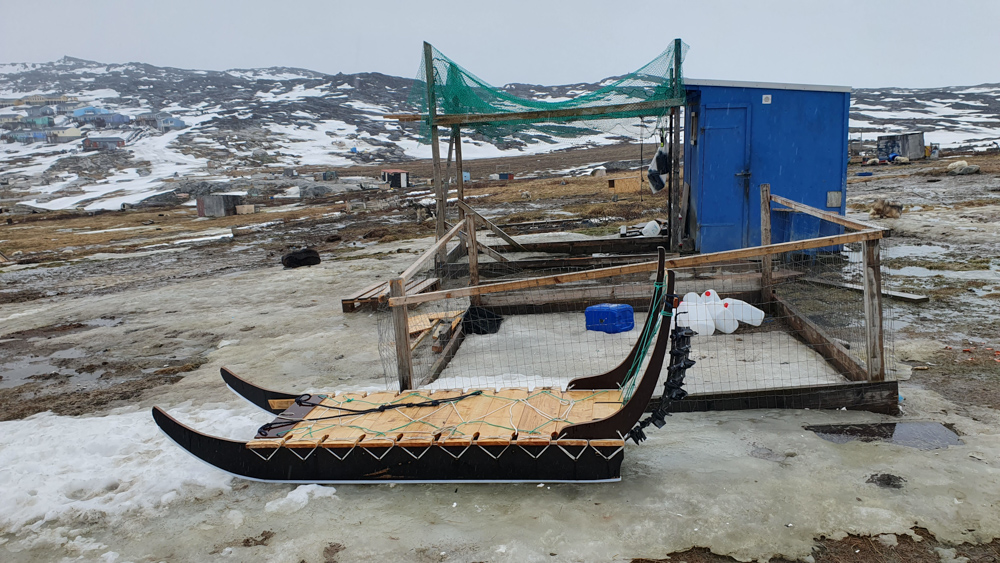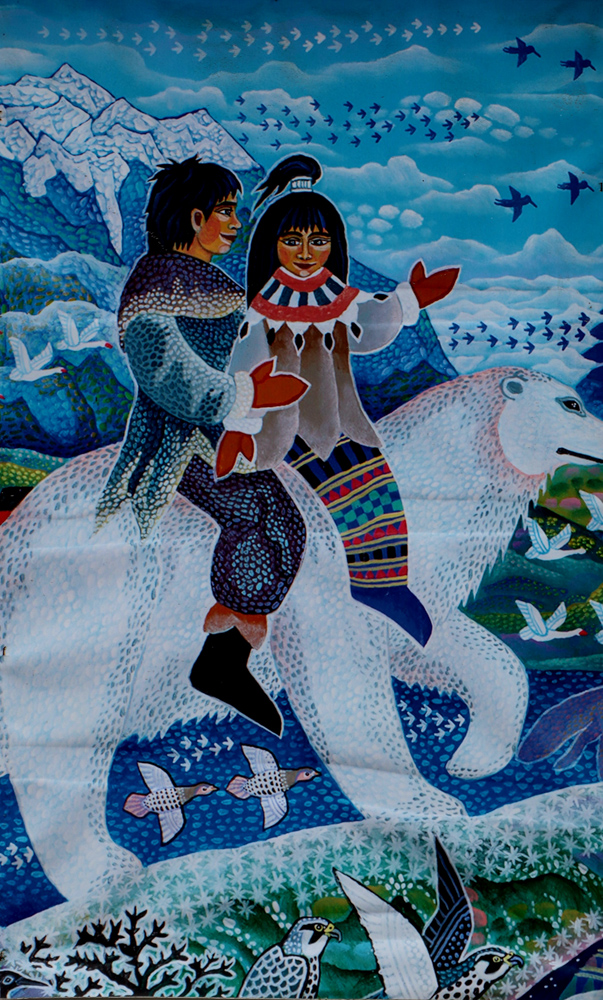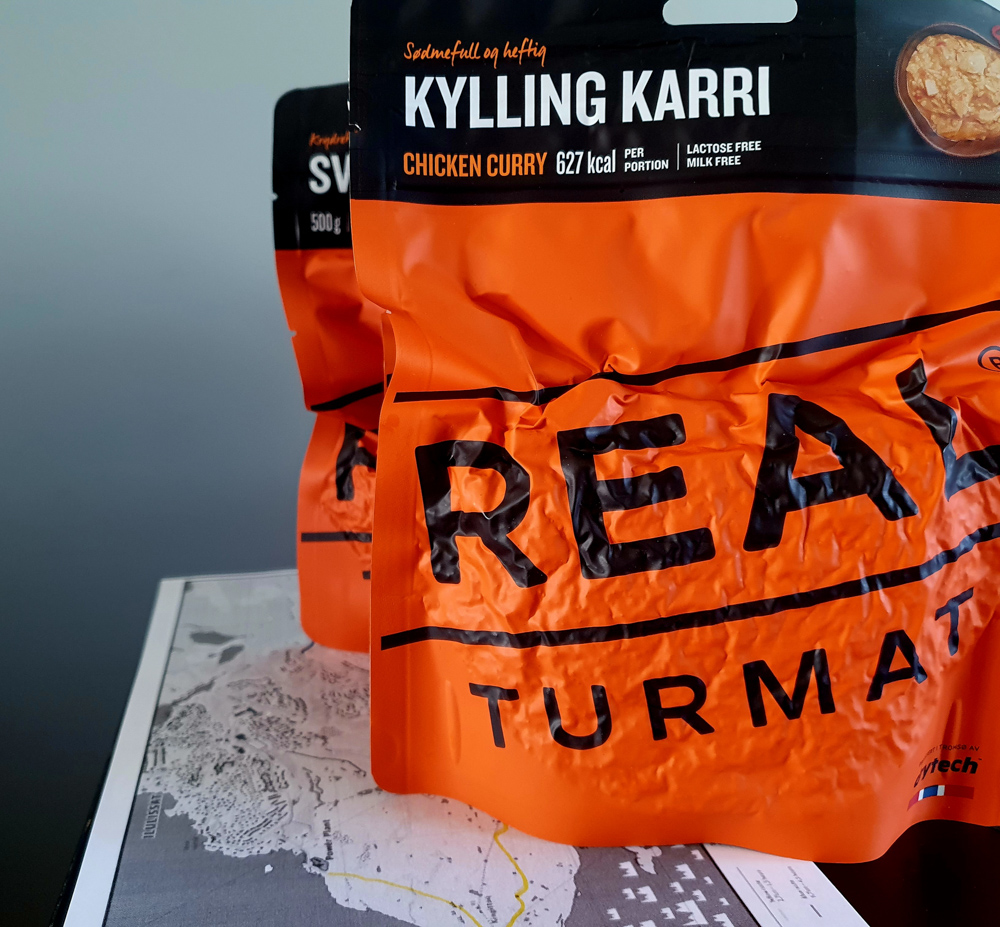Random greenlandic facts and interesting tidbits

Color coded houses
The houses in Greenland are very colorful and they beautifully decorate the environment which is often considered to be either gray and bleak or just plain white. But, the colors play a role; the houses are traditionally color coded which means that each of them has a meaning:
- black – police
- blue – factories
- red – churches and stores
- yellow – hospitals, houses in which the doctors and nurses lived
- green – radio communication
Nowadays the colors are randomly chosen, and this tradition is no longer strictly followed.
This is Ilulissat from the boat.
No petting dogs
There are countless kennels along the island, as there are no roads, and the sled dogs are a primary way of transportation on the ground. These animals are no lapdog pets. It is strictly forbidden to approach and cuddle them, especially without asking the owner first. They are born and raised to be tough and resilient, in order to thrive in this environment.
Greenland dogs came from Siberia 1000 years ago with the Thule people. The purity of their bloodline is being kept under strict control – it is not allowed to import any dog breeds to most of the cities in Greenland.
Inuit language
Greenlandic Inuit speak a very unique language – kalaallisut – famous for having barely pronounceable and incredibly long words; the line between the words and a sentence is quite blurred. It is considered to be one the most challenging languages to learn. But it is gorgeous. Especially to listen, as you don’t get to hear it often.
Ivana
I found it absolutely sweet that my name Ivana (+ Ivaasaq, Ivalimaaq, Ivâĸ, Ivâna, Ivaneĸ, Ivâraĸ as well), with the meaning “brood egg” in Kalaallisut became quite popular in Greenland in recent years. My version of the name comes from Hebrew and means “god is merciful”.
Whales in Isfjorden
In the seas around Greenland there are as many as 16 species of whales – from the smaller narwhal, beluga and porpoise to the gigantic baleen whales, blue whales, fin whales and humpback whales. Most whales come to the Disko bay near Ilulissat in the summer when it is ice-free, and there is abundant food. Only the bowhead whale, narwhal and beluga overwinter.
Tsunamis
It is forbidden to approach the shores of the Isfjorden; the advice is to stay at a safe distance. The icebergs calving off the Sermeq kujalleq glacier can be unpredictable and they flip, collapse or break easily, which causes tsunamis. There are no “fun” tsunamis to begin with, but to end up in these nearly frozen waters surely brings death due to hypothermia which occurs after a few minutes if you are dressed in anything else but a drysuit.
What I also adore is the fact that behind the houses along the coast you can always spot the icebergs.
Tupilak
Probably the most popular souvenirs are the tupilak/tupilaq monsters created out of bones of animals and even small children. Their use is quite sinister – they were made for cursing people. The shamans would wear their anoraks backwards, with the hood on their faces, and they would masturbate on bones while chanting.
The tricky part was – the curse could be returned to the sender if the receiver was skilled in rebounding it.
Ulu
One of the most popular symbols of Greenland are ulu knives, which are traditionally used by women for cutting meat, skinning animals, cutting hair and even cutting ice for making igloos.
Traffic signs
You know that you are in a different setting when you see the local traffic signs, corresponding to the local ways of traveling.
Expectedly, I saw hundreds of sleds in the city.
Street art
Loved these paintings on the building located in the street I was going along every day while being there.
Greenlandic food
One of the extremely rare struggles with Greenland was the traditional local food. Being someone who gladly tastes the local cuisine but who has major issues with all types of seafood and is prone to reactions to it, I’ve become the person who is entirely oriented towards the food that walks on the ground and uses a minimum of two legs while doing that. So, whale blubber, raw meat cut off the sea mammals and fish etc does not work well with me. In order to survive the days I have planned to spend hiking, climbing and exploring this country I have turned to only food which has never failed me before.
